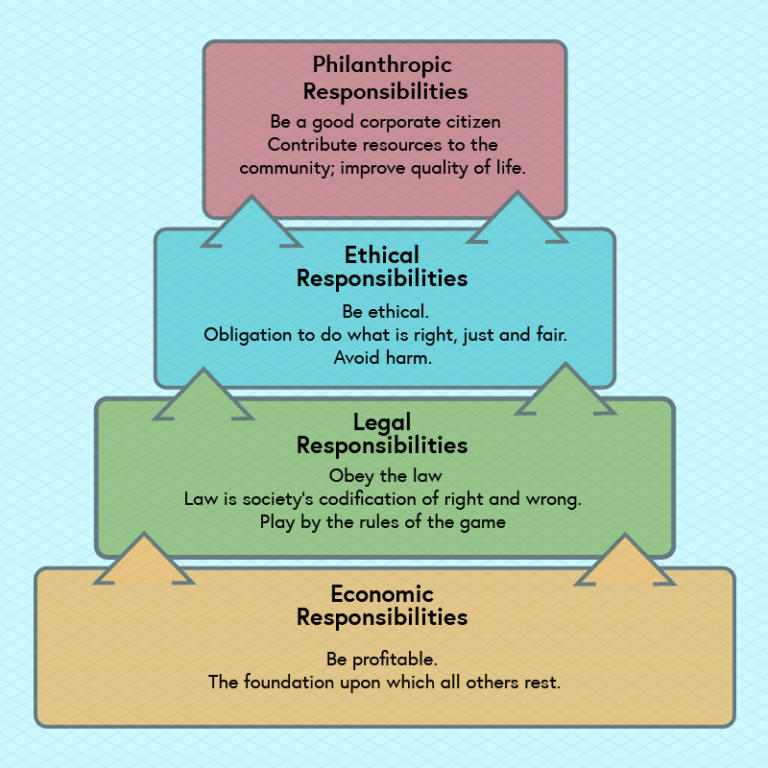What Is Corporate Social Responsibility (CSR)?
You cannot escape the responsibility of tomorrow by evading it today.(Abraham Lincoln, 16th president of the United States)
Defining the concept of Corporate Social Responsibility (CSR)
…the responsibility for enterprises for their impacts on society.
…to fully meet their corporate social responsibility, enterprises should have in place a process to integrate social, environmental, ethical and human rights concerns into their business operations and core strategy in close collaboration with their stakeholders, with the aim to maximise the creation of shared value for their shareholders and the society at large, and identify, prevent and mitigate the possible adverse impacts.(European Commission 2011)
Socially responsible businesses
…to minimise risks, maximise benefits, be accountable and responsive to stakeholders and support financial results.(BCCC 2011)
To maximise the creation of shared value, businesses must adopt a long-term, strategic approach to CSR, develop innovative products and services that contribute to societal wellbeing and create more quality and productive jobs. To identify, prevent and mitigate the possible adverse impacts, businesses must carry out risk-based due diligence, including through their supply chains (EC 2011).
Main CSR strategies
According to Porter and Kramer (2006), there are two types of CSR strategies:
| Responsive CSR | Aims to reduce potential risk and meet stakeholder expectations. |
| Strategic CSR | Proactively works to reduce negative and increase positive social and environmental impacts. |
Reasons to incorporate CSR into procurement practices
There are many reasons why businesses incorporate voluntary CSR within their procurement strategies. It may be because they want to strengthen their brand recognition and company image, expand their marketing outreach and improve their performance and sales, reduce costs and improve their financial performance, manage risks more efficiently and support the development of their local communities. Public authorities play a supporting role through a mix of voluntary policy measures and complementary regulations, whenever needed, to promote transparency, help businesses create their own policies and benchmark their performance, ensure corporate accountability and incentivise responsible business conduct (EC 2011).
Adopting CSR initiatives – Global Reporting Initiative and Global Compact framework
To encourage businesses to adopt sustainable and socially responsible policies and report on their implementation, a number of international independent standards initiatives were launched worldwide.
For example, the Global Reporting Initiative (GRI) is an independent international multi-stakeholder organisation which has created a common framework to help businesses, governments and others to voluntary report the social, economic and environmental impacts of their activities (GRI 2019).
In addition, a range of public-private partnerships in CSR has been established to help businesses, governments and other organisations understand and communicate their impacts on issues such as human rights and climate change. For example, in 1999 the United Nations introduced the UN Global Compact, a coalition of large businesses, trade unions and human rights groups that were brought together to share a dialogue on CSR.
The Global Compact is a non-binding principle-based framework that includes 10 principles in the areas of human rights, labour, the environment and anti-corruption, which businesses can incorporate into their strategies, policies and procedures (United Nations 2010).
The UN Global Compact

This diagram can be downloaded from the downloads section at the foot of the page.
(Adapted from UN 2019)
How to integrate CSR values into your procurement operations
Based on the adoption of the UN Global Compact principles, Jenkins (2009) designed a five-step model to help businesses integrate their CSR values into their operations.
| Step 1 | Understand CSR and develop own principles in line with the UN Global Compact framework. |
| Step 2 | Identify the values and dimensions of CSR that matter more for the business. |
| Step 3 | Evaluate the competitive advantages and opportunities that will be gained for the business by strategically addressing the selected CSR values and dimensions |
| Step 4 | Integrate CSR values and dimensions into the business strategy |
| Step 5 | Measure and report business performance and identify opportunities for further improvement |
Despite the development of the Global Reporting Initiative and the UN Global Compact, there is still a lack of consensus regarding the specific criteria that must be measured when assessing the CSR performance of a business. In a study of 10 methodologies assessing CSR, Giannarakis (2016) identified that the main challenges that businesses face when using them include the lack of specific CSR criteria per business sector, lack of transparency, unclear weighting of the selected criteria and poor consideration of social conditions.
Yet, the integration of CSR values into procurement operations in a clear, transparent way can help businesses take advantage of the opportunities to gain a competitive advantage while meeting their social and environmental obligations.
References
BCCC (2011) CSRI Report 2011. Chestnut Hill, Ma.: Boston College Center for Corporate Citizenship (BCCC)
Carroll, A. B. (1979) ‘A Three-Dimensional Conceptual Model of Corporate Performance’. The Academy of Management Review 4 (4), 497-505
Carroll, A. B. (1991) ‘The Pyramid of Corporate Social Responsibility: Toward the Moral Management of Organizational Stakeholders’. Business Horizons 34 (4), 39-48
EC (2011) ‘A Renewed EU Strategy for 2011-14 for Corporate Social Responsibility’. Communication from the Commission to the European Parliament, the Council, the European Economic and Social Committee and the Committee of Regions [online]. Brussels: European Commission [online] 15. available from https://europa.eu/capacity4dev/platform-rmsc-garment-sector/document/renewed-eu-strategy-2011-14-corporate-social-responsibility [8 July 2019]
GRI (2019) ‘Empowering Sustainable Solutions’. Global Reporting Initiative (GRI) [online]. available from https://www.globalreporting.org/Pages/default.aspx [8 July 2019]
Jenkins, H. (2009) ‘A ‘Business Opportunity’ Model of Corporate Social Responsibility for Small- and Medium-Sized Enterprises’. Business Ethics: A European Review 18 (1), 21-36
Porter, M. E., and Kramer, M. R. (2006) ‘Strategy and Society: The Link Between Competitive Advantage and Corporate Social Responsibility’. Harvard Business Review 84 (12), 78-92
United Nations (2010) ‘UN Global Compact Management Mode. Framework for Implementation’. The UN Global Compact. New York: Delloitte 32 [online]. available from https://www.unglobalcompact.org/library/231 [8 July 2019]
United Nations Global Compact (2019) ‘The Power of Principles’ United Nations Global Compact [online]. available from https://www.unglobalcompact.org/what-is-gc/mission/principles [15 August 2019]
Further reading
Knudson, H. (2019) ‘Making the Business Case: The Effects of Corporate Social Responsibility on SME Competitiveness’. A Report for ‘Road-CSR’. Interreg Europe: European Regional Development Fund, European Union
Share this
Sustainability and Green Logistics: An Introduction

Sustainability and Green Logistics: An Introduction


Reach your personal and professional goals
Unlock access to hundreds of expert online courses and degrees from top universities and educators to gain accredited qualifications and professional CV-building certificates.
Join over 18 million learners to launch, switch or build upon your career, all at your own pace, across a wide range of topic areas.
Register to receive updates
-
Create an account to receive our newsletter, course recommendations and promotions.
Register for free








